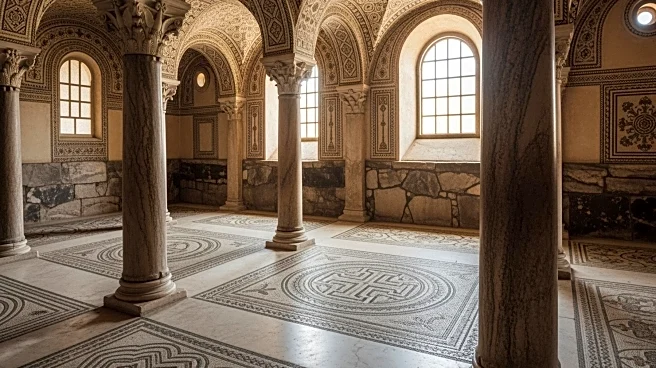What's Happening?
Archaeologists have uncovered a significant historical site in Olympus, an ancient Lycian port city in Turkey's Antalya province. The discovery includes a large bathhouse dating back to the 5th or 6th
centuries A.D., which was part of a bishop's residence. This bathhouse, measuring approximately 2,150 square feet, is notable for its size and complexity, featuring a heating system and wall-heating elements, making it a rare example from its period. The site also includes a Byzantine church with pebble mosaics, ancient cemeteries, and houses. The bathhouse was not solely for the bishop's use; it was open to the public on certain days, reflecting the bishop's role as both a spiritual leader and a civic official.
Why It's Important?
This discovery provides valuable insights into the dual roles of Byzantine bishops as both religious and civic leaders. The bathhouse's public accessibility highlights the bishop's commitment to community service, emphasizing cleanliness and health. Such findings contribute to a deeper understanding of early Christian life and the social structures of the time. The excavation also underscores the historical significance of Olympus as a center of early Christian activity, offering a glimpse into the architectural and cultural practices of the era.
What's Next?
Further excavations and studies are likely to continue at the site, potentially uncovering more artifacts and structures that could provide additional context about the period. The findings may attract interest from historians and archaeologists worldwide, leading to more collaborative research efforts. Additionally, the site could become a point of interest for cultural tourism, drawing visitors interested in early Christian history and archaeology.
Beyond the Headlines
The discovery raises questions about the role of religious leaders in ancient societies and their influence on public life. It also highlights the importance of preserving historical sites, as they offer invaluable insights into past civilizations. The integration of public amenities within religious complexes suggests a sophisticated approach to community welfare, which may inspire contemporary discussions on the role of religious institutions in societal development.












